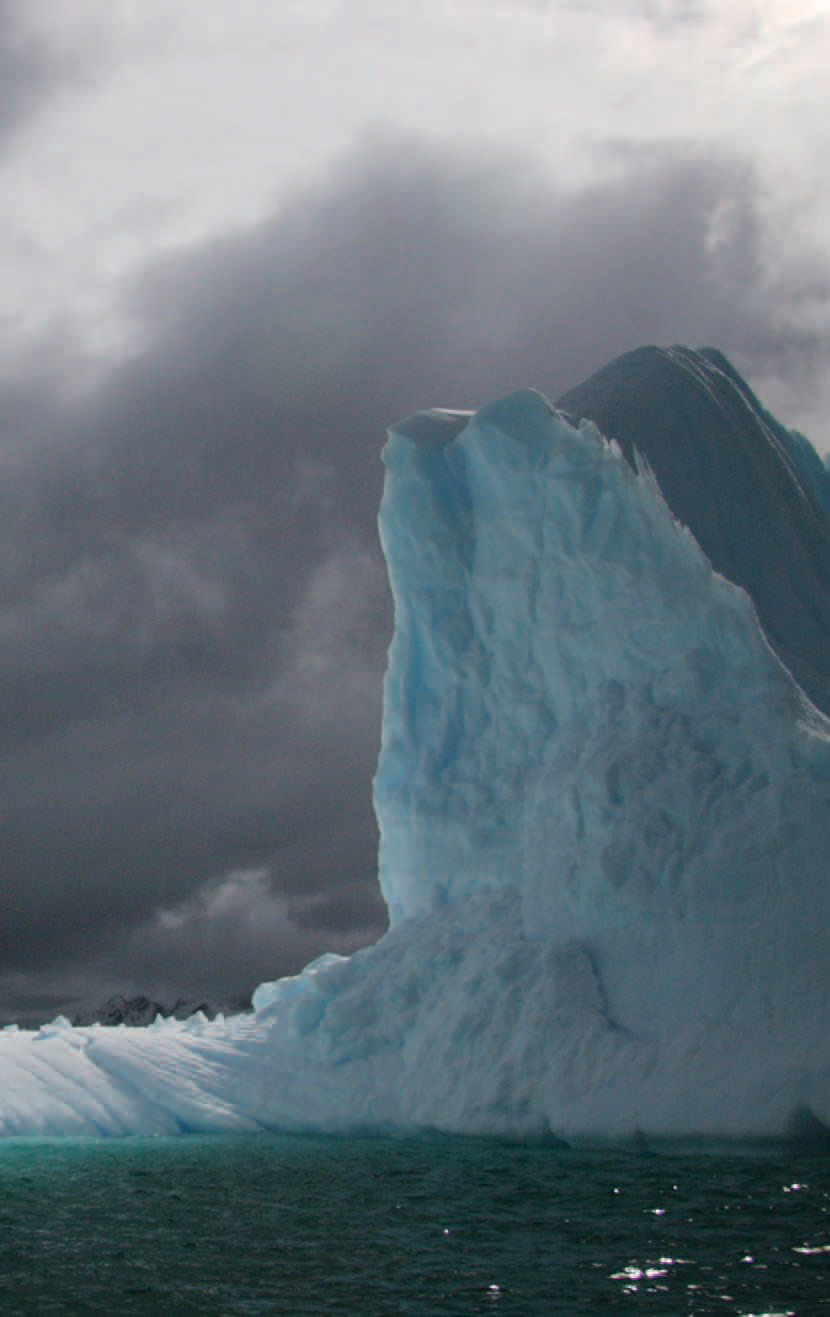By: CIFAR
4 Apr, 2014

Today, the planet is sustaining one of the swiftest and most extreme changes in atmospheric composition in its 4.6-billion-year history, due to human-produced greenhouse gases. Scientists are racing to determine the consequences, and whether we could be approaching another catastrophic switch, one with grave consequences for life on the planet.
Researchers are taking a number of approaches, from collecting better information about the current climate to creating better models of atmospheric interactions. But for a group of CIFAR scientists, the key is to better understand the Earth’s past. The CIFAR team is interrogating the planet’s ancient physical archive to see how it responded to similar events in the past.
“The rock record is out there waiting to be read,” says Jerry Mitrovica, Director of CIFAR’s Earth System Evolution program and a geophysicist at Harvard. “The Earth contains all the natural experiments you want.”
“When we look at the Earth’s history, we’re struck with the amazing resilience of the planet,” says Lee Kump, Associate Director of the program and a geoscientist at Penn State. “For 3.5 billion years, there’s been life somehow, despite monstrous impacts that could have had the potential to sterilize the Earth. Despite the horrible insults, the planet recovers.”
The Earth features a dynamic, shifting interplay among the living and non-living, fluid and solid, visible and invisible, all of which work together to keep the planet inhabited against the odds. That means the Earth system bends over backwards trying to remain stable and then, when it can’t, it changes tack, actively helping a new era come into being by enhancing the very assaults it faces. That’s called a positive feedback loop.
It means that disturbances don’t have to increase, they only have to persist, pushing the planetary system past a point it can fight. Then, change can happen abruptly.
James Zachos, a senior fellow at CIFAR and professor of earth and planetary sciences at the University of California, Santa Cruz, points to a classic example of abrupt change: the rapid development of the Antarctic ice sheets 34 million years ago. Carbon dioxide levels in the atmosphere were falling steadily; at one point a bit of the continent’s snow didn’t melt, and ice formed and bounced heat back up into the atmosphere. This helped more ice to form and, voila, Antarctica’s vast ice sheets came into existence in less than 40,000 years – the blink of an eye, geologically speaking.
A similar, if less straightforward, planetary phenomenon was Snowball Earth, thought to have developed about 850 million years ago. During that period, the planet was covered in ice for tens of millions of years. Living creatures were confined to remote nooks such as glacial beds and deep-water vents heated from the inner Earth, or, perhaps, were cryogenically preserved.
CIFAR Senior Fellow Daniel Schrag of Harvard and Associate Paul Hoffman of the University of Victoria have been central to the development of the Snowball Earth idea. As in the formation of Antarctica’s ice sheets, more and more white ice reflected heat away from the planet’s surface, causing runaway global cooling. The continents were clustered near the tropics at that time, and this helped draw more and more carbon out of the atmosphere, as rocks weathered into the ocean, cooling things down even more.
While the Earth was locked into a deep freeze, carbon dioxide that spewed from volcanoes steadily increased in the atmosphere, eventually triggering a paroxysm of warming and melting. This, in turn, led to an explosion of new multi-cellular life forms over millions of years.

A similar pastiche of planetary assaults was at play during the Paleocene-Eocene Thermal Maximum (PETM). This period of exceptional, rapid warming occurred about 55 million years ago, not long after the dinosaurs became extinct. Scientists are fascinated by the period, which is considered a possible parallel to the current perilous state of the climate and ocean systems.
Zachos, one of the world’s leaders on this enigmatic period, gave a talk about it at a CIFAR meeting and Kump dove in as a result.
When the PETM began, the planet was already a hothouse by today’s standards. But it got far, far hotter – as much as 9 degrees Celsius on average – after a massive infusion of carbon-based gas hit the atmosphere. This was such a huge spike, it was equivalent to the burning of all the modern planet’s remaining stores of oil, gas and coal. PETM scientists discovered that the atmosphere was heavily laden with carbon-based gas by looking at the isotopes of elements, such as carbon, in the fossils.
At the same time, the Arctic Ocean heated up enough to resemble a salty bathtub with a layer of fresh water on the top, thronged with freshwater ferns. Even the deep ocean heated up by 4 or 5 degrees C, a phenomenon scientists hadn’t believed possible until CIFAR researchers and others discovered it. Many life forms became extinct and new ones came into being.
But the shocker was a finding by Zachos, Kump and another CIFAR Senior Fellow, Katherine Freeman, a geoscientist at Pennsylvania State. The three conducted research on a beautifully preserved chunk of the PETM record they found on Svalbard, an archipelago in Norway. They already knew that an enormous amount of carbon-based gas had hit the atmosphere during the PETM, but they didn’t know how fast it went in. In Svalbard, they discovered that it had entered the atmosphere at a rate of somewhere between 0.3 and 1.7 trillion kilograms a year.
That’s fast. And Earth responded to it cataclysmically. But today’s rate is far faster. In 2008, for example, humans pumped 9.9 trillion kilograms of carbon into the atmosphere, anywhere from five to 33 times the rate during the PETM.
While some of CIFAR’s detective work focuses on individual episodes from long ago, other investigations have uncovered deeply concealed planetary patterns or tendencies that run through Earth’s history.
Mitrovica recounts the story of collaborating with two other CIFAR senior fellows: Alessandro Forte, a geophysicist at Université du Québec à Montréal, and David Rowley, a geologist and paleogeographer at the University of Chicago. Like a crack team of crime-scene investigators, they pooled their specialties to solve a particularly puzzling case.
They were trying to discover why three-million-year-old beaches along the east coast of the United States are now 50 to 80 metres above present sea level. These ancient beaches were there when the Earth was 2 to 3 degrees C warmerthan today. Other scientists had seen the bea ches’ elevation as proof that the polar ice sheets had melted away in the face of the warming.
But when Rowley, Forte and Mitrovica put their heads together, they realized that those earlier arguments didn’t take into account the flow of the mantle (the solid, but shifting region between the Earth’s crust and its core), nor the tectonic plates the mantle carries with it. As Mitrovica pointed out, this flow doesn’t just move tectonic plates across Earth’s surface horizontally (leading to the familiar ideas of continental drift); it also moves them vertically. These massive forces can drag continents down with them, working like the heavy anchor of a ship, or push them up – even at locations far away from well known plate boundaries such as the San Andreas Fault. And they could drastically change the elevation of ancient shorelines, like those along the east coast of the U.S.
Rowley and Forte had another key piece of the puzzle. Their recent work had focused on the Farallon tectonic plate, which had been subducted, or absorbed, under North America until about 30 million years ago. They knew that this plate now sat deep below the east coast of the United States, 1,000 kilometres below Earth’s crust – and that, even at that depth, it was still influencing the elevation of the continent. This meant the earlier thinking – that the sea level had risen up to 80 metres from the collapse of polar ice – was incorrect.
“Forte, Rowley and I said, ‘In this case, it’s the land going down and up, not the sea going up and down,” says Mitrovica.
The finding has rewritten textbooks on sea change, a key concern in today’s rapidly warming world, and it means scientists examining ancient sea levels for clues about ice volumes must now take into account what has happened over time in the deep Earth.
But we can’t take this as cause for optimism, says Mitrovica. “When we look at other times when the Earth was warmer than today, there is clear evidence that major sectors of the Greenland and West Antarctic ice sheets melted and sea level rose close to 10 metres higher than what we see today. This is just getting started.”

CIFAR fellows are working to understand how climate change has affected ocean chemistry in the past and present, and what the changes could mean for life on Earth. Photo by Mikael Eriksson.
An equally radical find stemmed from digging into the geological record to explore Earth’s fundamental ability to support life. This was driven by curiosity and solved by some canny sleuthing on the part of a large international, interdisciplinary team that included Zachos and Kump.
“If I had followed my heart and passion, I would have been a policeman or a detective,” confesses Kump. “I always read detective stories and was interested in solving mysteries.”
The question at hand: How have high carbon levels in the atmosphere affected the pH of the ocean over the past 300 million years, and how have these shifts in pH affected patterns of extinction?
It’s a key consideration today as the ocean absorbs part of the air’s carbon load, sparking a chemical reaction that creates carbonic acid in the water and makes it more acidic. Just in the past couple of hundred years, the ocean surface waters have become 30 per cent more acidic than they were before people began burning fossils for energy. Today, the ocean is more acidic than it’s been for 55 million years – since the PETM – and it is poised to become far more so this century if fossil-fuel burning continues.
This landmark ocean acidification study found that high carbon loads in the atmosphere have acidified the ocean a handful of times in the planet’s billions of years, but the effect on species – whether they survived, or died en masse – was linked to how quickly that happened. The quicker the acidification, the greater the number of extinctions.
So the team looked at the pace of carbon emission. They found that during the end-Permian mass extinction 252 million years ago, carbon entered the atmosphere swiftly, likely from volcanic activity. That extinction is the biggest of Earth’s five mass extinctions, and is known as the “Great Dying” because 95 per cent of species became extinct.
But the rate of carbon release into the atmosphere today is even quicker, the team discovered – anywhere from 10 to 100 times quicker. That is the fastest of any time in the history of the Earth as far as scientists can read it, and has worrying implications.
“Clearly the rise in greenhouse gases that we are currently experiencing is much faster than what we believe was the rate of change for past events,” says Zachos.
While the chemistry of the ocean is critical to the fate of life on Earth, much of it is still not fully understood. CIFAR Fellow Eric Galbraith, a professor of earth and planetary sciences at McGill University in Montreal, is trying to change that. Galbraith is working with another CIFAR Fellow, Markus Kienast of Dalhousie University, and Daniele Bianchi, a post-doctoral fellow at McGill whose work is also funded by CIFAR.
Together, they have begun to revolutionize the way scientists understand the chemistry of the modern and recent ocean, sometimes literally excavating forgotten data out of other scientists’ file drawers and hard drives and crunching the numbers in new ways.
Last year, they published the first global analysis of the ocean’s nitrogen cycle over the past 30,000 years, based on an analysis of the rare, stable isotope, nitrogen-15. They found that the cycle runs faster in a warmer ocean that is spiked with more low-oxygen zones, a phenomenon that increasingly characterizes the modern ocean.
In another paper, Bianchi and Galbraith showed that animals migrating vertically through the water every day play a significant role in changing the chemistry of the whole ocean, particularly when it comes to oxygen. Before their study, scientists had assumed that bacteria controlled marine chemistry.
This finding has raised new questions about the health of the ocean. In the past few decades alone, humans have taken vast volumes of migrating creatures out of the ocean. The implications for ocean chemistry are not yet clear.
The emerging picture of Earth’s past, which is coming into focus through the research of the fellows in CIFAR’s program in Earth System Evolution, is inevitably linked to concerns about its future. Senior Fellow Shawn Marshall, a glaciologist and climatologist at the University of Calgary, has been tracking the ongoing dramatic melt of Greenland’s ice sheets. In 2012 alone, the sheets lost 630 billion tonnes of ice, shattering all records. That’s eight times the amount of ice the Alps lost in more than a century, from 1900 to 2010.
It’s worrisome. But Greenland’s ice could be rebuilt by snowfall if the climate cooled again, Marshall says. He’s more concerned about the hidden pulse of heat nestled ominously in the depths of the North Atlantic Ocean. That pulse, soaked up by the ocean from the atmosphere, is inexorably making its way toward Antarctica.
If it is enough to warm the water surrounding that continent by as little as 1 or 2 degrees C, then it could destabilize the ice shelves, Marshall says, causing them to fracture and topple into the sea. And once they’re gone, they’re gone. If the shelves disappear, there is little to stop the massive ice sheets behind them from flowing into the ocean. This worst case scenario would lead to a sea level rise of perhaps 60 metres, changing the face of the Earth yet again.
“When you poke the system, the system will run with it,” he says. “And the amount of poking we’re doing now is definitely something that worries many of us.”
Notifications